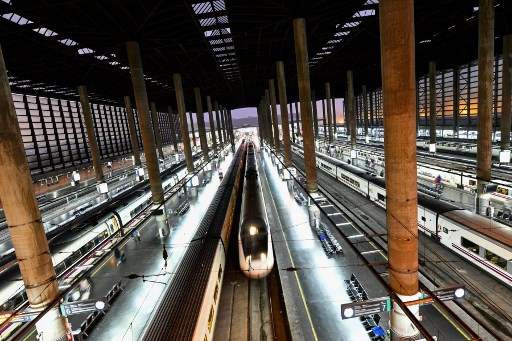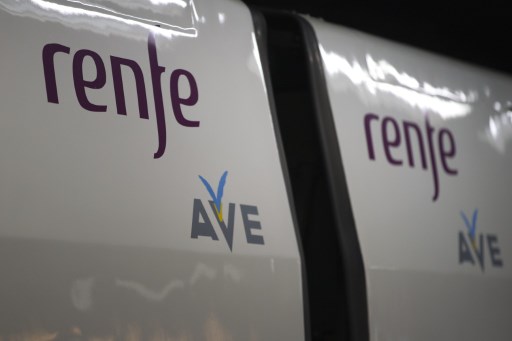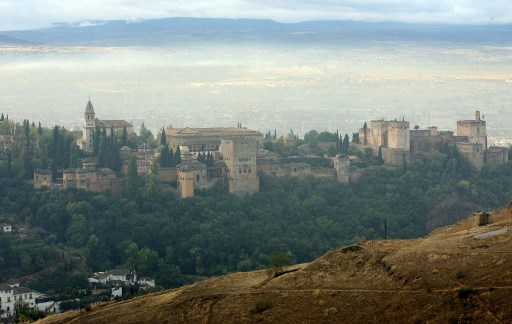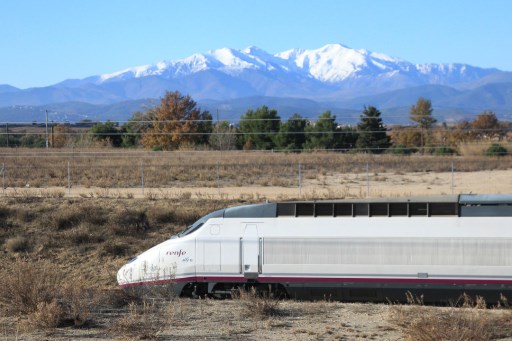It has been delayed countless times but the ‘Ave’ as Spain’s, high speed train is called, will be fully operation between Granada and Madrid from June 26th.
Prime Minister Pedro Sanchez was on the inaugeral train to Granada a day before it was launched to the public.
Grandes infraestructuras como el AVE llevan tras de sí el trabajo y dedicación de ingenieras e ingenieros; de quienes minimizan el impacto ambiental; de quienes, con sus manos, han tendido traviesas y raíles.
Gracias a ellos, España es ya líder en ingeniería civil. #HolaGranada? pic.twitter.com/B0SadzBWox— Pedro Sánchez (@sanchezcastejon) June 25, 2019
Until now there was only one direct train operating per day each way between Madrid and Granada and that took just over 5 hours.
The slowest high-speed train in Spain

The fastest train will get you between Madrid and Granada in 3hours five minutes, but there will also be a slower train stopping at stations along the way adding 20 minutes to the journey.
It has been dubbed the “slowest” high speed train in Spain because it will take 3hrs 5mins to travel the 510 km railway route between Madrid and Granada.
That’s much longer than the 2 hours 20 minutes it takes between Madrid to Malaga which is 533km and the 511km between Madrid and Seville.
And it’s only ten minutes less than the Barcelona-Madrid route of 615km.
Although the most direct route between Madrid and Granada is by road where a distance of 420km takes just over 4 hours by car if there’s no traffic.
But the rail route is longer because it goes via Antequera.
Plus there’s a go slow area about 30km long around Loja where the trains have to reduce speed before entering a 19century tunnel where there is a speed limit of 30km/ph
This means that the trains never reach a speed above 200km per hour compared with the top speeds of 300km on the Barcelona route.
Plans for improvement
It’s not even open yet but plans have already been announced to construct an alternative route to allow trains to travel up to 300km per hour. That would bring the journey time down to around 2 hours and 40 minutes. But don’t hold your breath for that to happen any time soon.
How busy a route will it be?

There will be three trains each way daily between Granada and Madrid.
From Madrid they will leave at 7.20am (7.35am on Saturdays and Sundays) and at 2.35pm and 7.35pm.
From Granada, trains will depart at 7.10am, and at 3pm and 7.19pm.
There will also be one direct train each day each way between Granada and Barcelona, departing Barcelona at 6.50am and from Granada at 3.35pm, a total journey time of 6 hours 25.
These trains will also connect travellers, without stopping in Madrid, from Granada to Zaragoza (4 hours 30 minutes), Lleida (5 hours 10 minutes) or Tarragona (5 hours 50 minutes).
All the trains to and from Granada will stop at Cordoba – four each way daily – a journey of 1hour 30 minutes.
Prices
The price of a (flexible) tourist class ticket between Madrid and Granada will be €80.30 each wayand €64.25 each way if you buy a return ticket.
Between Barcelona and Granada the price is €118,10 euros for the flexible tourist ticket reduced to 94.50 each way if you book the return.
But there will be promotional seats on sale for cheaper.
Special offer
Right now there is a bargain offer of €35 each way between Madrid and Granada and €45 between Granada and Barcelona for travel between June 30th and September 15th.
¡Compra ya tus billetes de Ave a Granada!
Renfe pone en marcha el Ave Granada-Madrid el próximo 26 de junio.
Aprovecha nuestros precios promocionales desde 35 euros ?— Renfe (@Renfe) June 4, 2019
A long time coming
Plans were first announced for a high speed train linking the city famed for the Alhambra with the capital back in the late 1990s but it never quite off the ground.
Then during the government of socialist Prime Minister Jose Luis Rodrigues Zapatero a plan was made to start the work in 2007 but the crisis hit and the massive infrastructure project was put on hold.
Then the end date was set for 2015 and now four years later, the project has finally come to fruition.
José Luis Ábalos, Spain's minister for Infrastructure announced the opening of the route with the words: “Today is a great day for Granada”
Hoy es una gran día para Granada. Después de varios años de aislamiento ferroviario, el AVE llegará a esta ciudad el 26 de junio.
— José Luis Ábalos (@abalosmeco) June 3, 2019
The next step is to link the network between Granada, Seville and Malaga and create a Mediterranean route across Spain’s southern coast.
Why visit Granada?

The Alhambra is the most visited site in Spain. Photo: AFP
The Andalusian city that was the last bastion of the Islamic caliphate in Spain, finally being conquered during the reconquista in 1492.
The jewel in Granada's crown is the Alhambra, the Moorish palace and gardens that attracts more visitors than any other tourist site in Spain.
But don't let that be your only stop in a city that offers so many more delights.
With its backdrop of the snow topped mountains of the Sierra Nevada, its worth spending a few days discovering the Andalusian city.
READ MORE: Six great reasons to visit Granada (besides the Alhambra)



 Please whitelist us to continue reading.
Please whitelist us to continue reading.
Member comments